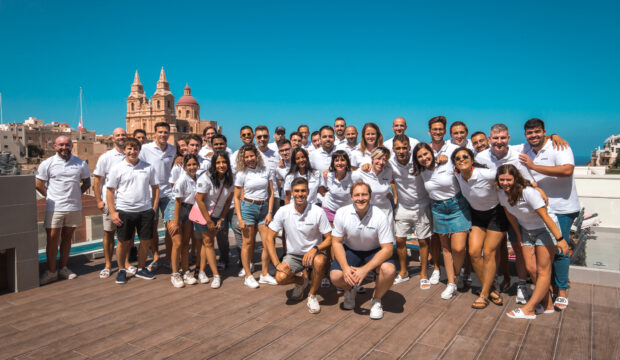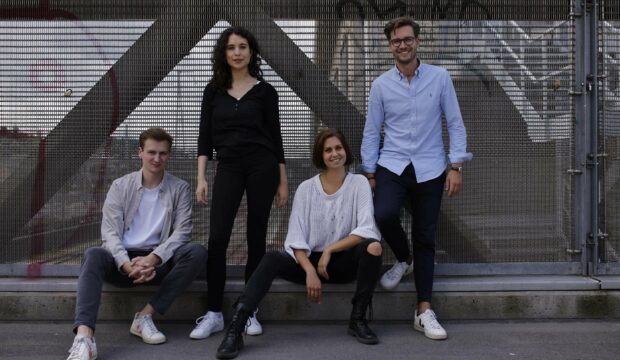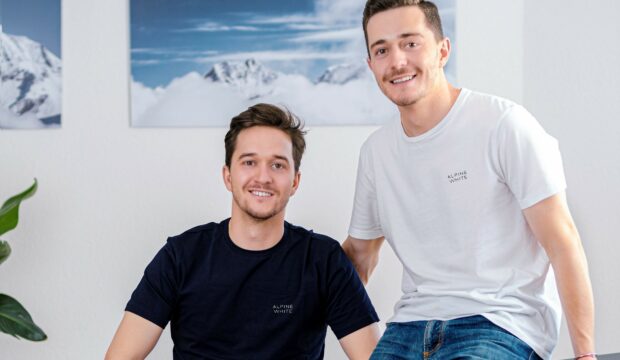
Co-founder & CEO, Dr. Sotiria Mostrou of Biosimo talks to us about the IP license for the chemical startup, the company’s future plans and also shares her advice to other founders considering a university spin-off.
What is the motivation behind the spin-off Biosimo and what are the mission and vision?
Biosimo’s mission is to take fossil fuels out of the chemical industry by developing new, cost-effective technologies and processes and establishing the large-scale production of bio-based chemicals. Biosimo’s processes not only decarbonise the energy of the process, but also remove the fossil carbon embedded in the chemicals themselves, using green chemistry principles to minimise the environmental impact of production. We want to offer solutions that can provide economic and realistic green alternatives to the petrochemical industry. It’s important for us to provide environmentally sustainable chemicals that are also economically sustainable.
Acetic acid is the base for many products – which products exactly are we talking about, and why is the production of acetic acid unsustainable?
Acetic acid is actually the acid in vinegar. It’s the most commercialised organic acid in the chemical industry because it is a very small molecule, it is not potent, and it is used to make other materials. Acetic acid ends up in many products, some of them very early in the value chain. Its oldest use is in the food industry, as a preservative or flavor component. It is needed as a raw material for some polymers, for example cellulose acetate, which is a fiber used in clothing (label “acetate” or “triacetate”). Then you have polyvinyl acetate, which is used as an adhesive in the construction industry. Acetic acid is also used as a solvent or cleaning agent in the pharmaceutical industry. So what is wrong with acetic acid? The same thing is wrong with all the basic chemicals we have: 95 percent contain fossil carbon, including acetic acid.
How did you create this new technology, what was the process?
What we do differently is that we start with a non-fossil source – an existing source – ethanol from biological sources. Today, ethanol is added to gasoline to make it more environmentally friendly, so there are already developed processes for large-scale production around the world. Recently we have seen more ethanol production from other sources, such as biowaste in the case of Sunliquid ® by Clarient, and from gases produced during the chemistry of steel production, by Steelenol.
Biological anaerobic fermentation can easily lead to ethanol. The problem comes after that. We provide the link between the biologically produced ethanol and the synthetic chemicals needed by the chemical industry. The next step for us is to design a process that is beneficial for the environment and people, and to save needed energy. In this case, our catalytic reaction produces energy instead of consuming it. Similar to the combustion of ethanol, we add oxygen, in a so-called “exothermic reaction”; our job is to perfectly control this reaction to harness both the energy and the product.
Why did you decide to spin off your business and how was the process?
It was a bit of instinct combined with the right timing. As scientists, the first thought when we have a breakthrough is to publish the results. But once we understood that this would be a game-changer in the acetic acid market, we decided to ask ETH to patent instead. And the question from ETH was “who will commercialise it?” At that point I was an expert in my field, having worked on it for four years and I knew that nobody else cared about the technology as much as I did. So I thought “you know, maybe I want to commercialise this”. And that was my first step in starting Biosimo. I started talking to some people who had built startups and asked questions like, “What does it take to build a startup?”. I come from an entrepreneurial family, and I knew that there would be a lot of challenges. The biggest challenge was identifying exactly what the customer’s pain was. The obvious problem is the carbon footprint. But when we started talking to the industries that use acetic acid, we realized that we could solve much more than the environmental problem of acetic acid, such as reliable local support. So our challenge was, how do we go from laboratory technology to solving such a big problem in the chemical industry; what can we solve today, one year from now, and seven years from now?
And just to go back to the process of the technology. How long did it take you from starting out and testing until you developed the prototype of your product?
It’s very interesting because in chemistry we tend to forget about the product itself. A reaction is just the first step, and multiple downstream processes are needed to deliver a chemical the purity the customer needs. I worked on this project for four years and never actually made the product, but a raw form of that product. So it took about one more year and a lot of motivation to say let’s make a prototype and share it with a customer. We got our first MVP around 2021. And the next challenge was the scale; the minimum viable product varies from customer to customer. For one customer one kilogram is enough, another needs a minimum of 10 tonnes.
You licensed IP from ETH – what were the challenges and how was your experience with LEXR?
Since our technology is highly patent dependent, we had to negotiate the license agreement with ETH to have the exclusive right to use this technology. What was difficult in our case is that chemical startups are not very common, and the chemical industry has very low margins. So the additional difficulty in the negotiation was that, given the margins, we couldn’t go for a very high royalty base. In another type of industry, such as life science equipment or robotics, the situation would be very different. The negotiations went relatively smoothly because ETH was supportive from the beginning to create a sustainable business. But we realized that we needed someone to say: “Guys, you have to negotiate, don’t sign the first term sheet.” And that is where LEXR came in. They helped us see what terms we really needed to agree to and helped us voice our concerns. When the time came to negotiate, it was really nice to have LEXR on our side telling us if what we were asking ETH to do was reasonable. They gave us a sanity check on where we should push and where we shouldn’t. And I think that made the whole negotiation a lot smoother for both sides.
What I like about LEXR is that the lawyers we work with are not the typical rigid lawyers that most people have in mind. They are very flexible and understand that they are talking to technical people and are always willing to explain. They are very quick, especially when they know that time is of the essence. And they are not afraid to push when it comes to negotiations or when we’re not very comfortable ourselves because we’re not used to that.
What would you recommend to others in the same situation that are thinking about spinning off from a university or want to negotiate for an IP license?
My advice would be to just go for it. There is a lot of support from the university and startup ecosystem in Switzerland, the risk is minimal, and usually the people who want to spin off are already experts in their field or technology. There’s a lot of learning that’s ahead of the scientist-turned-entrepreneur, but it’s all doable. What you need to understand is that the university wants to support you, they want to be part of your success, and they want to make some profit so they can fund more innovative projects that will benefit our society.
Communication with the university is key. Don’t assume that the university will necessarily understand every business when they negotiate. This means that the negotiation may start at a point that may or may not be reasonable. What I would advise here is to always ask for an opinion, not only from lawyers but also from an expert in the field, and go back with that opinion, continue the conversation, because most of the time the university wants to find a solution with you.
What are your next milestones/goals for Biosimo?
In terms of production and technology, we are launching our mini pilot in March, which will produce a few kilograms of product per week. It doesn’t sound like much, but it’s a thousand times more production than what we’ve been doing. There are some customers that need tonnes and we will be able to supply those customers in 2024 when we expect our pilot to start. On the business side, we’re growing the team – taking a critical look at what expertise we lack and building a highly motivated and diverse team that encourages collaboration between people with different areas of expertise.
Related
100+ companies, both big and small, are starting and growing their business with LEXR.
Let’s Go!
Book a free, non-binding discovery call to discuss how we can help you achieve your business goals.
Or feel free to reach us directly via email at [email protected].


